Saint Patrick's Day is on March 17th
It’s a day to dig out all your green clothing put on a silly hat, drink copious amounts of green beer and eat corned beef and cabbage. Yes it’s St. Patrick’s Day the spring event that’s becoming more popular every year and is starting to be celebrated around the world.
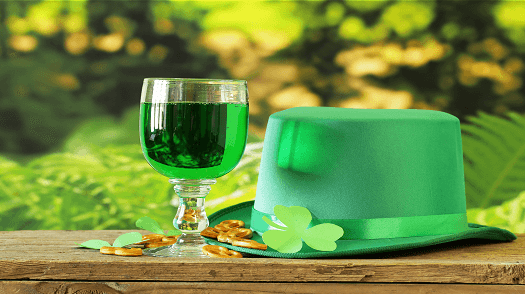
Who was St. Patrick?
St. Patrick is the patron saint and national apostle of Ireland who is believed to have died on March 17th 461AD. To commemorate his death the day became known as St. Patrick’s Day and is now being celebrated around the world as well as in Ireland. The Irish people have been celebrating this event for well over a 1,000 years and as the day is a religious day it was still required by law for pubs to be closed on March 17th right up until the 1970’s.
Many cities celebrate by holding parades with Boston and New York in America having two of the biggest celebrations outside of Ireland. In Ireland the day usually starts off with a visit to church as St. Patrick’s Day falls during the Christian season of Lent. In the afternoon the festivities include dancing, drinking and the eating of a traditional meal of Irish bacon and cabbage though this has changed over the years to corned beef and cabbage.
St. Patrick was born in Britain to wealthy parents in Wales during the Roman era in 385AD. At the age of 16 he was kidnapped and taken to Ireland to be a slave by a group of Irish raiders who were attacking his family’s estate. Whilst in Ireland he worked alone and afraid as a shepherd. He turned to religion for support and became a devout Christian. In his writings he said that a voice -which he believed to be God’s - spoke to him in a dream, telling him it was time to leave Ireland.
After six years in captivity he escaped by walking 200 miles to the coast and then returned to Britain. During his time in Britain he had a vision from an angel that told him he needed to return to Ireland as a missionary. To fulfil this vision Patrick started his religious studies that lasted some 15 years. When he was ordained as a priest he was given a mission to return to Ireland to accomplish two tasks.
His first was to minister to the Christians already settled in Ireland and the second was to convert the Irish to Christianity. Within 200 years of Patrick arriving in Ireland the land was Christianised. Many myths surround Patrick including the three leaves of the Irish clover. It’s said that he explained the Holy Trinity using the Shamrock - the Father, The Son and The Holy Spirit.
Patrick was familiar with Irish culture and injected traditional Irish ritual into his lessons as opposed to trying to wipe it out. He used bonfires to celebrate Easter as Irish people were used to using fire as a way to honour their gods. Patrick laid the sun over the Christian cross to create what is now called the Celtic cross. The sun was a powerful Irish symbol at the time and its use would seem more natural to the Irish to adopt.
There are many legends about St. Patrick one of the most widely known is the story of him standing with a wooden staff on a hill now called Croagh Patrick banishing all the snakes out of Ireland. This tale is probably a representation of the removal of pagan belief from Ireland and the successful establishment of Christianity.
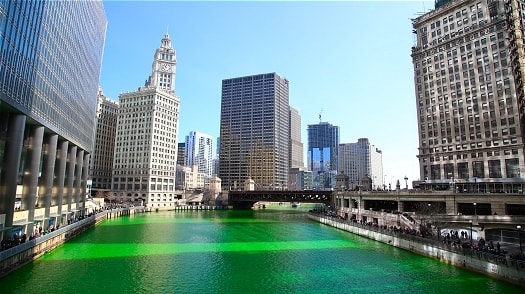
The Green Chicago River
Every year the river flowing through Chicago in America turns green to celebrate St. Patrick's Day. This tradition started back in 1962 when the cities pollution workers used dye to trace illegal sewage discharges. They came across the idea that the green water would make a great way to mark the event. Back in 1962 they put 100lbs of vegetable dye into the river staining it for a whole week.
To reduce the environmental impact today they only use around 40lbs just enough to dye the river for a few hours.
St Patrick's Day across the world
St. Patrick's Day has caught on in many countries including the United States, England, Canada and Australia to name but a few and is also becoming a popular event in Singapore, Japan and Russia. In America there is believed to be around 34 million residents that have Irish ancestry which is seven times more than the whole population of Ireland itself.
The Irish government decided in 1995 to use the day to increase tourism and today around one million people visit Dublin to take part in the St. Patrick’s Festival. Party goers revel in a four-five day celebration of concerts, parades outdoor theatre shows and fireworks.
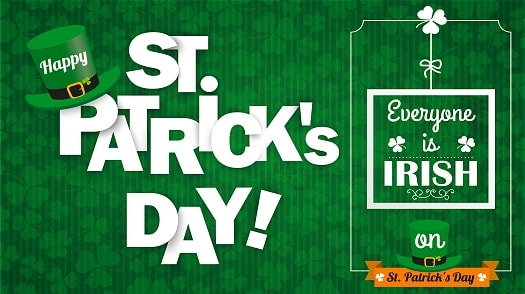
Irish music
Music has always played an important role in Irish society from the days of the Celts passing on their culture and religion through music and songs to today's modern St. Patrick's Day celebrations and musical parades. As the Irish became dominated by the English they sought ways to preserve their history and remember important events. They used music as a way to stir emotion and bring people together. This did not go down well with the English and Queen Elizabeth I declared that all musicians and pipers were to be arrested on the spot and hanged.
Modern Irish music is becoming popular around the world and uses the traditional instruments such as the fiddle, the uilleann which is similar to bagpipes, the tin whistle and the bodhran which is an ancient frame drum.
St. Patrick's Day food
Today the traditional food eaten on St. Patrick's Day is corned beef and cabbage accompanied with Irish soda bread. Cabbage has long been a staple of the Irish diet but the corned beef only really began to be eaten on St. Patrick’s Day at the turn of the century. The traditional meal would have been Irish bacon a lean, smoked pork loin and cabbage.
Corned beef was substituted by Irish Americans living in New York who discovered from their Jewish neighbours that corned beef cured and cooked much like Irish bacon was a tasty and cheaper alternative to pork. The beef and cabbage was cooked in the same pot to save money and the spiced salty beef flavoured the relatively plain tasting cabbage thus creating a simple, cheap and filling dish to prepare and serve. In the USA in 2023 around 30 billion lbs of beef and 3 billion lbs of cabbage was produced for the celebration.
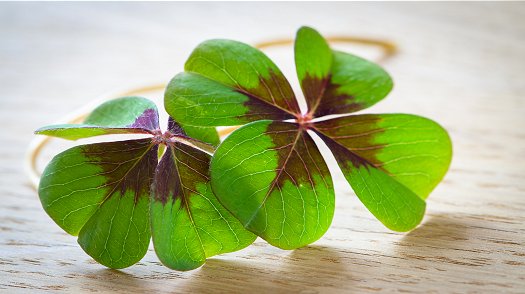
The Shamrock
In the 17th Century the English started to seize Irish land and put in place laws banning the use of the Irish language and practicing Catholicism. Naturally many Irish were displeased with this and started to wear the shamrock as a symbol of their pride in their heritage and culture. The Shamrock was a sacred plant that symbolised the rebirth of spring in ancient Ireland. The Celts called the Shamrock the "seamroy" which is the Celtic word for clover.
Irish Proverb
May your thoughts be as glad as the shamrocks. May your heart be as light as a song. May each day bring you bright, happy hours that stay with you all the year long.
There’s a tradition associated with the shamrock called the 'drowning of the shamrock'. At the end of the day the shamrock which has been worn in the coat or the hat is removed and put into the final glass of grog or tumbler of punch; and when the health has been drunk or the toast honoured, the shamrock should be picked out from the bottom of the glass and thrown over the left shoulder.
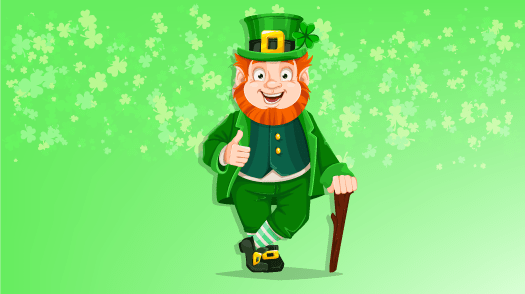
Irish leprechaun
The Irish people have a special name for the leprechaun, in ancient folklore they were called 'Lobaircin' which means a small bodied fellow. Leprechauns are little bearded men wearing a coat and a derby hat with buckled shoes and dressed in green but prior to the 20th Century they was dressed in red. Leprechauns and also be found wearing an apron and smoking a pipe.
Leprechauns are well known for their trickery and love to partake in mischief. It is thought that the belief in Leprechauns originates from the Celts belief in fairies.
Fairies were tiny men and women that had mystical powers they could use for good or evil. The Celtic folktales tell of how Leprechauns were grouchy people that were responsible for mending the shoes of other fairies and have a pot of gold hidden at the end of a rainbow. If you are lucky enough to catch a leprechaun they will often grant three wishes in return for their freedom.
